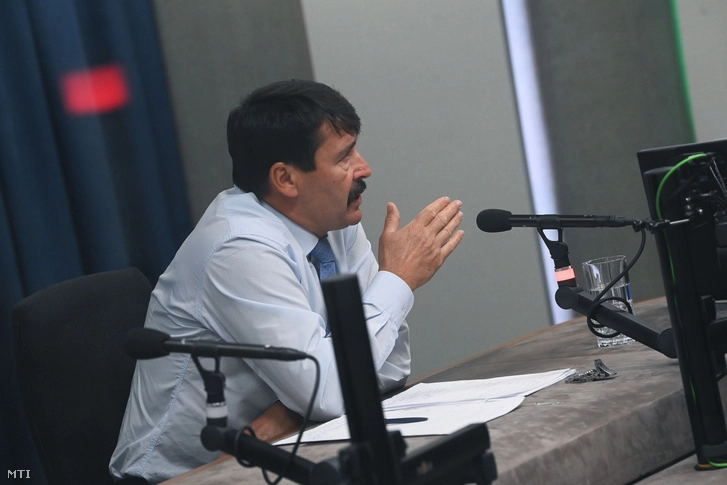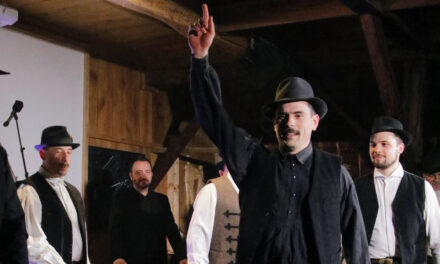"A nation that does not know its past does not understand its present, and cannot create its future!" Europe needs Hungary... which has never let itself be defeated.
Mood report on history teaching
A few days ago, a friend of mine - and he is an authentic person for me, he wouldn't invent such historical rubbish on his own - traveled from Eger to Budapest by train.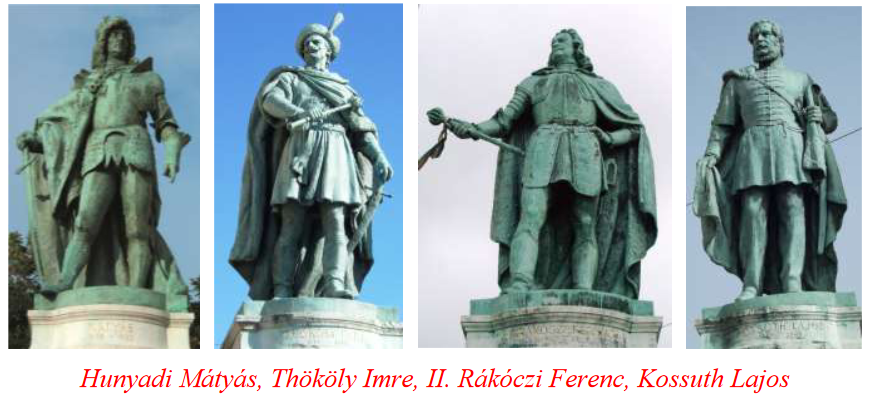
 During the two-hour journey, a young history teacher gave a lecture on the results of "newer research" in Hungarian history in the carriage space - he was not assigned to a cab. I don't have the space here to go through the examples of the young titan's burrs, I just want to give a sense of the phenomenon. It turned out that János Hunyadi is clearly of Romanian origin, this is not even controversial. And he wasn't a Turkish fighter either, because he only won one battle, the one in Nándorfehérvár, but it wasn't him either, but János Kapistzrán, who didn't even know Hungarian, and his brother-in-law Mihály Szilágyi. Who was later imprisoned by his nephew Mátyás. The Romanian Mátyás was actually unjust, he taxed his people mercilessly, and that is why the Kingdom of Hungary collapsed after his death. The Black Army was an assembly of robber gangs, a violent assembly company. Imre Thököly was an unscrupulous scoundrel who raised his stepson, little Ferenc Rákóczi, with a "good example". Anyone who attacks the Great Prince, especially if that person is a history teacher, should have a suspicion in every Hungarian that the person who proclaims this is in a serious mental crisis. Lajos Kossuth was not the soul of the Hungarian people, but rather a burden. Together with Deak, he brought the country to ruin. And so on and so forth. (They are the ones who actually destroyed Hungary according to the new doctrines. The self-proclaimed high-profile speaker - I have several guesses as to which universities he could have completed his studies at - proved that nothing happened as it is in the public mind. The petrified bastions of history education must be destroyed. Our mouthpiece hero did nothing but comply with the order according to which national histories must be destroyed and adapted to the "common" European history that is already being prepared. In order to understand the vehemence of the non-expressly worldview and party-neutral cause, let's cast our "watchful eyes" on the relevant events of Poland, a people that have been friends for one thousand and one hundred years.
During the two-hour journey, a young history teacher gave a lecture on the results of "newer research" in Hungarian history in the carriage space - he was not assigned to a cab. I don't have the space here to go through the examples of the young titan's burrs, I just want to give a sense of the phenomenon. It turned out that János Hunyadi is clearly of Romanian origin, this is not even controversial. And he wasn't a Turkish fighter either, because he only won one battle, the one in Nándorfehérvár, but it wasn't him either, but János Kapistzrán, who didn't even know Hungarian, and his brother-in-law Mihály Szilágyi. Who was later imprisoned by his nephew Mátyás. The Romanian Mátyás was actually unjust, he taxed his people mercilessly, and that is why the Kingdom of Hungary collapsed after his death. The Black Army was an assembly of robber gangs, a violent assembly company. Imre Thököly was an unscrupulous scoundrel who raised his stepson, little Ferenc Rákóczi, with a "good example". Anyone who attacks the Great Prince, especially if that person is a history teacher, should have a suspicion in every Hungarian that the person who proclaims this is in a serious mental crisis. Lajos Kossuth was not the soul of the Hungarian people, but rather a burden. Together with Deak, he brought the country to ruin. And so on and so forth. (They are the ones who actually destroyed Hungary according to the new doctrines. The self-proclaimed high-profile speaker - I have several guesses as to which universities he could have completed his studies at - proved that nothing happened as it is in the public mind. The petrified bastions of history education must be destroyed. Our mouthpiece hero did nothing but comply with the order according to which national histories must be destroyed and adapted to the "common" European history that is already being prepared. In order to understand the vehemence of the non-expressly worldview and party-neutral cause, let's cast our "watchful eyes" on the relevant events of Poland, a people that have been friends for one thousand and one hundred years.
In case anyone didn't know, the new Polish government would remove all the sections on Christianity and Hungarian-Polish relations from the Polish curriculum. Considering that they "inappropriately" interpret the interwoven and mutually helpful relationship of Hungarians and Poles for centuries. For example, the person of the Polish king István Báthory would be removed from the history books. While he was the only Polish ruler who was able to defeat the Russian Tsar Ivan the Terrible several times. (However, how useful this would be for the "European" power. I would like to see into the minds of the sons of the people who gave the world the holy pope, what they think about all this. I think sooner rather than later, but it will be revealed.)
The following writing was already ready when these things spoken on the train reached me. I didn't change anything!
The tragic turn of the history of Hungary (1490-1526)
The years after Mátyás's death, after 1490, again brought internal contradictions, a period of bloody battles for the throne.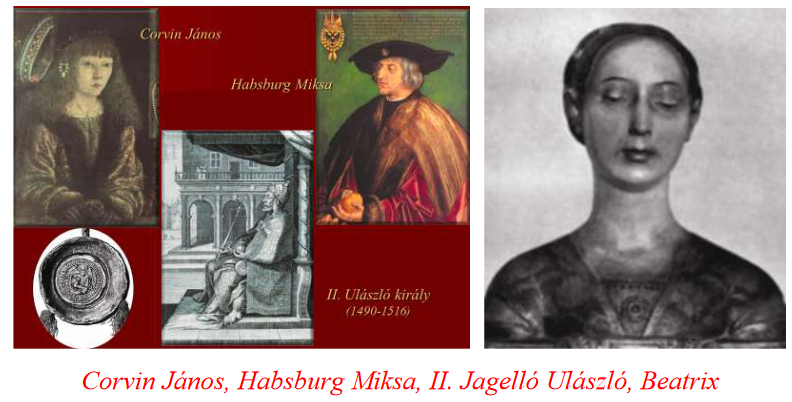 Mátyás knew and wrote in 1489 that his wife, Beatrix, would also apply for the throne after his death. Mátyás, on the other hand, nominated his son János Corvin as his successor. The greatest danger, however, III. Reported by Frigyes and his son Miksa Habsburg. Ulászló Jagielló also applied for the Hungarian throne, and in the end he was placed in the royal seat. Let's add that with the support of Mátyás' former generals, Balázs Magyar, Pál Kinizsi and István Báthori. We had no luck with the Jagiellonian kings of Poland.
Mátyás knew and wrote in 1489 that his wife, Beatrix, would also apply for the throne after his death. Mátyás, on the other hand, nominated his son János Corvin as his successor. The greatest danger, however, III. Reported by Frigyes and his son Miksa Habsburg. Ulászló Jagielló also applied for the Hungarian throne, and in the end he was placed in the royal seat. Let's add that with the support of Mátyás' former generals, Balázs Magyar, Pál Kinizsi and István Báthori. We had no luck with the Jagiellonian kings of Poland.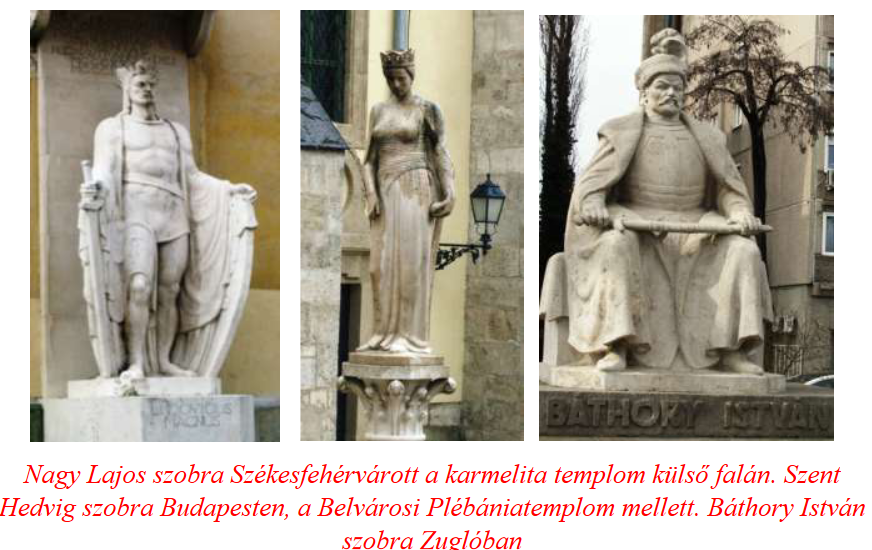 In 1444, Ulászló I took the Hungarian army to the grave near Varna, and János Hunyadi was also able to escape from the bloodbath only with great difficulty. II. Ulászló, who was named László Dobzse (he's fine) because of his weak hand and incompetence..., ruled the Hungarian throne for twenty-six years. The king who previously fought against Matthias in Silesia and the Czech Republic was even nicknamed "ox" by the Czechs. He caused Hungary little glory and even more losses. Ulaszló's son, II. In 1526, the king who came to the throne under the name Lajos took Hungarian independence to his grave on the field of Mohács. (It should be noted here that the Hungarian rulers brought fame and glory to Poland. Lajos the Great and his daughter, Hedvig, who converted Lithuania, and then István Báthory, prince of Transylvania and king of Poland, are still prominent figures in Polish history. However, in 2024, they fell out of favor on the Polish political stage . I have written several times in recent years about the antipathy of several European countries, either in the past or in the present, towards the Hungarians, supporting it with adequate explanations. However, I would never have believed that the Poles would ever do this. They erase the names and deeds of Hungarian historical heroes from the from Polish history textbooks. However, it was King István Báthory of Poland who defeated the ancient enemies of the Poles, the Russians, on several occasions.) For the sake of completeness, let us note that II.
In 1444, Ulászló I took the Hungarian army to the grave near Varna, and János Hunyadi was also able to escape from the bloodbath only with great difficulty. II. Ulászló, who was named László Dobzse (he's fine) because of his weak hand and incompetence..., ruled the Hungarian throne for twenty-six years. The king who previously fought against Matthias in Silesia and the Czech Republic was even nicknamed "ox" by the Czechs. He caused Hungary little glory and even more losses. Ulaszló's son, II. In 1526, the king who came to the throne under the name Lajos took Hungarian independence to his grave on the field of Mohács. (It should be noted here that the Hungarian rulers brought fame and glory to Poland. Lajos the Great and his daughter, Hedvig, who converted Lithuania, and then István Báthory, prince of Transylvania and king of Poland, are still prominent figures in Polish history. However, in 2024, they fell out of favor on the Polish political stage . I have written several times in recent years about the antipathy of several European countries, either in the past or in the present, towards the Hungarians, supporting it with adequate explanations. However, I would never have believed that the Poles would ever do this. They erase the names and deeds of Hungarian historical heroes from the from Polish history textbooks. However, it was King István Báthory of Poland who defeated the ancient enemies of the Poles, the Russians, on several occasions.) For the sake of completeness, let us note that II.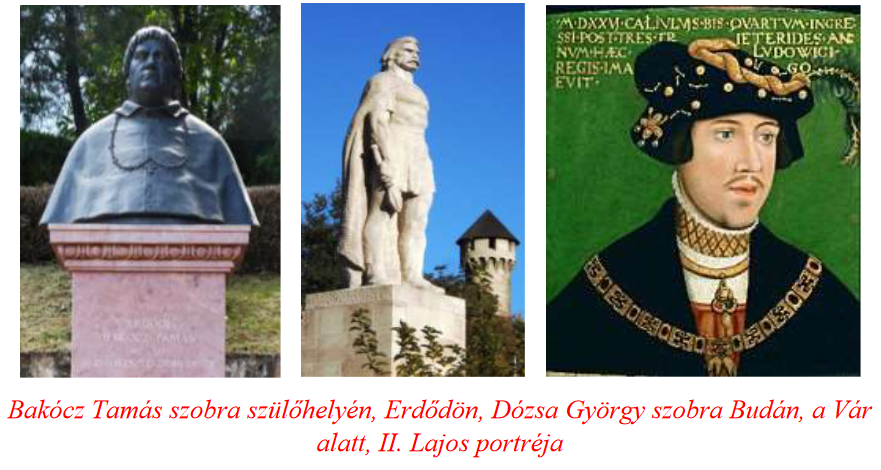 Significant and tragic events took place during the 26-year reign of Ulaszló. These include the Rákos decree of 1505, which stated that in the future only a national king could ascend the Hungarian throne. Esztergom Archbishop Tamás Bakócz took part in the papal election in Rome in 1513, but the Medici overthrew the Hungarian. The following year, in the spring of 1514, the peasant uprising led by György Dózsa broke out, which led to enormous internal carnage. This weakened country, but rich in natural resources, was invaded by money-making "investors" supported by the Habsburg emperors. Among others, the German Fuggers, who enjoyed the support of profit-seeking Hungarian lords, such as the Thurzós. The child king II, who ascended the throne at the age of ten. Louis was unable to cope with the forces of the Ottoman Empire that invaded Hungary in 1526, and the great tragedy of the Hungarian nation occurred on the field of Mohács. It really wasn't the battle with great blood loss that was decisive, as it had happened before. But what followed.
Significant and tragic events took place during the 26-year reign of Ulaszló. These include the Rákos decree of 1505, which stated that in the future only a national king could ascend the Hungarian throne. Esztergom Archbishop Tamás Bakócz took part in the papal election in Rome in 1513, but the Medici overthrew the Hungarian. The following year, in the spring of 1514, the peasant uprising led by György Dózsa broke out, which led to enormous internal carnage. This weakened country, but rich in natural resources, was invaded by money-making "investors" supported by the Habsburg emperors. Among others, the German Fuggers, who enjoyed the support of profit-seeking Hungarian lords, such as the Thurzós. The child king II, who ascended the throne at the age of ten. Louis was unable to cope with the forces of the Ottoman Empire that invaded Hungary in 1526, and the great tragedy of the Hungarian nation occurred on the field of Mohács. It really wasn't the battle with great blood loss that was decisive, as it had happened before. But what followed.
The splitting of Hungary into two and then three parts
Szulejmán Nagy, Hungary's greatest destroyer, attacked the late 27,000-strong Christian army with an army of 60,000.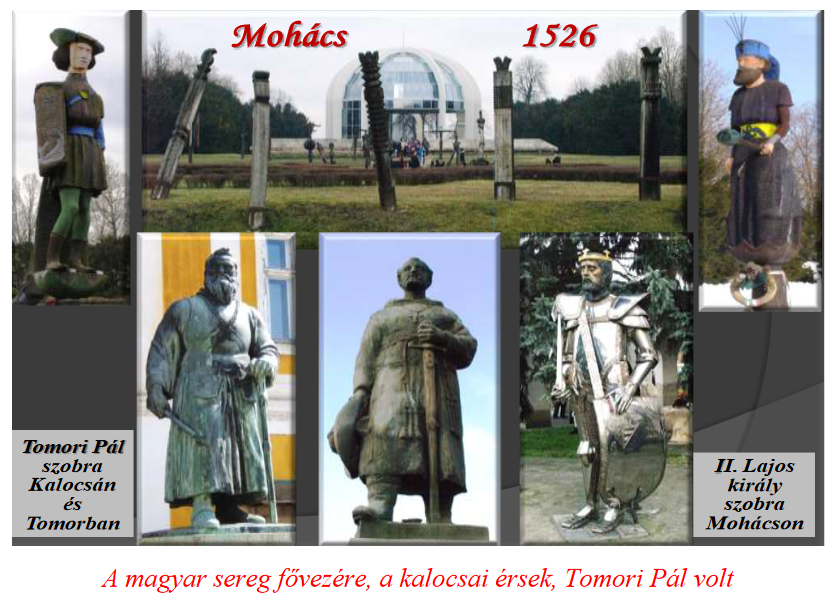 The flawed royal tactics also contributed to the tragedy, which meant not only the Battle of Mohács, but also the inexorable defeat of the then five-hundred-year-old Kingdom of Hungary. The trouble was compounded by the fact that starting in 1517, after the appearance of Márton Luther, the wars of religion in these very years were also huge material and human. they caused ideological and political damage. The religious war - even if the Torda edict born in Transylvania in 1568 declared religious peace for the first time in Europe - caused the greatest destruction on German soil, but it also divided the Hungarians and turned them against each other. The main reason for the defeat in Mohács, in addition to faulty military leadership, was also due to the attitude of the divisive Hungarian lords the cantons pursuing a policy of self-interest . The numbers that speak of who and in what numbers did not appear at the scene of the battle, even though it was their duty according to the ancient laws, are telling. The main support and source of politics is history.
The flawed royal tactics also contributed to the tragedy, which meant not only the Battle of Mohács, but also the inexorable defeat of the then five-hundred-year-old Kingdom of Hungary. The trouble was compounded by the fact that starting in 1517, after the appearance of Márton Luther, the wars of religion in these very years were also huge material and human. they caused ideological and political damage. The religious war - even if the Torda edict born in Transylvania in 1568 declared religious peace for the first time in Europe - caused the greatest destruction on German soil, but it also divided the Hungarians and turned them against each other. The main reason for the defeat in Mohács, in addition to faulty military leadership, was also due to the attitude of the divisive Hungarian lords the cantons pursuing a policy of self-interest . The numbers that speak of who and in what numbers did not appear at the scene of the battle, even though it was their duty according to the ancient laws, are telling. The main support and source of politics is history.  It is no coincidence that among school subjects, the content of history books receives special attention. Knowledge of the past can lead the politician responsible for his nation to what he thinks is the right path, which the future will then decide whether it was really right or not. Over the centuries, the Turks and the Ráks (Serbs) decimated the Hungarian population to the greatest extent, when they exterminated the vast majority of the population of the Great Plain and the Southern Region. Today, Hungary maintains friendly and good relations with these two countries. It is still possible to build a future from the past. History is predictable, but politics is not. double election of a king in 1526 , as a result of which the country split into two parts pursuing opposing policies.
It is no coincidence that among school subjects, the content of history books receives special attention. Knowledge of the past can lead the politician responsible for his nation to what he thinks is the right path, which the future will then decide whether it was really right or not. Over the centuries, the Turks and the Ráks (Serbs) decimated the Hungarian population to the greatest extent, when they exterminated the vast majority of the population of the Great Plain and the Southern Region. Today, Hungary maintains friendly and good relations with these two countries. It is still possible to build a future from the past. History is predictable, but politics is not. double election of a king in 1526 , as a result of which the country split into two parts pursuing opposing policies.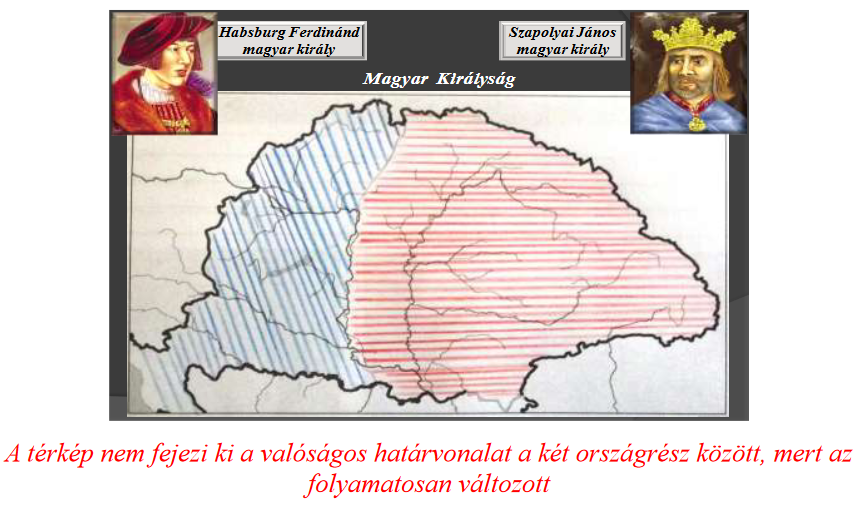 At that time, the Turks only plundered and destroyed the central parts of the country, such as Buda, and then withdrew from Hungary for tactical reasons.
At that time, the Turks only plundered and destroyed the central parts of the country, such as Buda, and then withdrew from Hungary for tactical reasons.
Hungary in the web of conspirators. The country divided into three parts (1541)
The father of the Venetian-Turkish Lodovico Gritti, Andrea Gritti, later Doge of Venice, began his career in Istanbul as the Venetian ambassador. Lodovico, who was both at home in Italy and the Ottoman Empire, was born here. He entered the stage of politics just when the Ottoman armies attacked Hungary with renewed force after Mohács. The Venetian, who was born a Christian, did everything to put the Kingdom of Hungary in the hands of the greatest Turkish destroyer, Suleiman the Great , and he himself held a lucrative leadership position in Buda. His plan succeeded, he divided the Hungarian lords, while he gained power and considerable wealth. His fate was his excessive greed, his unbridled desire for power and his enormous wealth, which made even his opponents' teeth hurt. However, he significantly contributed to the fact that Sülejmán Nagy was able to capture Buda in 1541 without a fight, by trickery . The once united Kingdom of Hungary split into three parts in 1541. In a century and a half, this division destroyed the country to such an extent that it was never able to regain its independence, territorial unity, and great power . In addition to the spectacular geographical fragmentation, religious differences and contradictions (Roman Catholic - Reformed - Evangelical - Unitarian - Islamic - Orthodox), the division of power (Habsburg Empire - Royal Hungary - Turkish Empire - Principality of Transylvania) and military and economic conflicts of interest also weakened the Hungarianness. From there, a straight path led to the Trianon tragedy that occurred in 1920.
The once united Kingdom of Hungary split into three parts in 1541. In a century and a half, this division destroyed the country to such an extent that it was never able to regain its independence, territorial unity, and great power . In addition to the spectacular geographical fragmentation, religious differences and contradictions (Roman Catholic - Reformed - Evangelical - Unitarian - Islamic - Orthodox), the division of power (Habsburg Empire - Royal Hungary - Turkish Empire - Principality of Transylvania) and military and economic conflicts of interest also weakened the Hungarianness. From there, a straight path led to the Trianon tragedy that occurred in 1920. 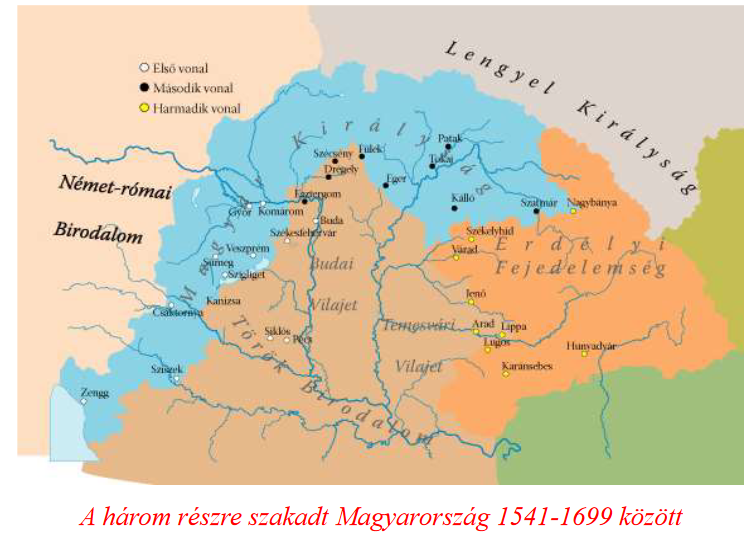 In addition to the destruction of the external forces, unfortunately - although precisely as a result - the internal wars also caused a lot of damage, when Hungarians took up arms against Hungarians. There is no space here to list suicidal wars, but I will mention one sad example. Such was the Blood Carnival that took place in 1596 . The people of Közszékely took part in the battle of Gyurgyevo against the Turks with an army of about 20,000 people, where they won a brilliant victory. Despite the promise, the Szekler serfs returning from the battle did not receive their liberation. They took up arms again, but this time against their Székely nobles. Under the leadership of István Bocskai, the Transylvanian nobility mercilessly put down the uprising. A marble plaque preserves their memory on Gyergyószárhegy. In the Thirty Years' War (1618-1648), György I. Rákóczi fought on the side of the Swedish and Danish, as well as the Protestant German allies, for many years, marching tens of thousands of soldiers against the Habsburgs and their allies. This is how, among other things, the sad situation occurred that György I. Rákóczi, whom we respect because of his historical role and princely greatness, came face to face with Miklós Zrínyi in 1644 . The historical and literary role of the general, poet and politician is highly regarded and respected by all Hungarians. But the religious antagonism, the great power game of Porta, which was behind Rákóczi, and Vienna, which was behind Zrínyi, turned the two Hungarians against each other , and hundreds of their soldiers were left dead on the battlefield.
In addition to the destruction of the external forces, unfortunately - although precisely as a result - the internal wars also caused a lot of damage, when Hungarians took up arms against Hungarians. There is no space here to list suicidal wars, but I will mention one sad example. Such was the Blood Carnival that took place in 1596 . The people of Közszékely took part in the battle of Gyurgyevo against the Turks with an army of about 20,000 people, where they won a brilliant victory. Despite the promise, the Szekler serfs returning from the battle did not receive their liberation. They took up arms again, but this time against their Székely nobles. Under the leadership of István Bocskai, the Transylvanian nobility mercilessly put down the uprising. A marble plaque preserves their memory on Gyergyószárhegy. In the Thirty Years' War (1618-1648), György I. Rákóczi fought on the side of the Swedish and Danish, as well as the Protestant German allies, for many years, marching tens of thousands of soldiers against the Habsburgs and their allies. This is how, among other things, the sad situation occurred that György I. Rákóczi, whom we respect because of his historical role and princely greatness, came face to face with Miklós Zrínyi in 1644 . The historical and literary role of the general, poet and politician is highly regarded and respected by all Hungarians. But the religious antagonism, the great power game of Porta, which was behind Rákóczi, and Vienna, which was behind Zrínyi, turned the two Hungarians against each other , and hundreds of their soldiers were left dead on the battlefield. It was even a topic in Viennese circles that the Hungarians were not actively killing each other, so the Habsburgs also deployed Croatian troops against the prince. It should be known that after 1526 the Hungarian nobility, whether they were Roman Catholic and sided with Vienna, or lived in the eastern ends and in Transylvania and were Protestant, wanted the same thing. Namely, the reunification of the country. II was born from the marriage of Ilona Zrínyi and Ferenc I. Rákóczi. Ferenc Rákóczi, who will lead the longest Hungarian freedom struggle against the Habsburgs.
It was even a topic in Viennese circles that the Hungarians were not actively killing each other, so the Habsburgs also deployed Croatian troops against the prince. It should be known that after 1526 the Hungarian nobility, whether they were Roman Catholic and sided with Vienna, or lived in the eastern ends and in Transylvania and were Protestant, wanted the same thing. Namely, the reunification of the country. II was born from the marriage of Ilona Zrínyi and Ferenc I. Rákóczi. Ferenc Rákóczi, who will lead the longest Hungarian freedom struggle against the Habsburgs.
Freedom fights against the Habsburgs
The 16-18. The main dream, desire, and goal of 19th-century Hungarians – whether they lived in Royal Hungary or in the Principality of Transylvania – was to be able to reunify Hungary under the Holy Crown. The first historical figure to be mentioned was István Bocskai. At the end of the 16th century, the Transylvanian lord fought numerous political and battlefield battles with the enemy who wanted to invade Transylvania and his possessions. Be it Mihály Vitéz of Havasalföld, the general of the Habsburgs, the cruel Basta, or the continuously attacking Turks. Bocskai, the excellent general and talented politician, was also supported by the equally talented Gábor Bethlen, who encouraged him to rise against the Habsburgs.
The main dream, desire, and goal of 19th-century Hungarians – whether they lived in Royal Hungary or in the Principality of Transylvania – was to be able to reunify Hungary under the Holy Crown. The first historical figure to be mentioned was István Bocskai. At the end of the 16th century, the Transylvanian lord fought numerous political and battlefield battles with the enemy who wanted to invade Transylvania and his possessions. Be it Mihály Vitéz of Havasalföld, the general of the Habsburgs, the cruel Basta, or the continuously attacking Turks. Bocskai, the excellent general and talented politician, was also supported by the equally talented Gábor Bethlen, who encouraged him to rise against the Habsburgs.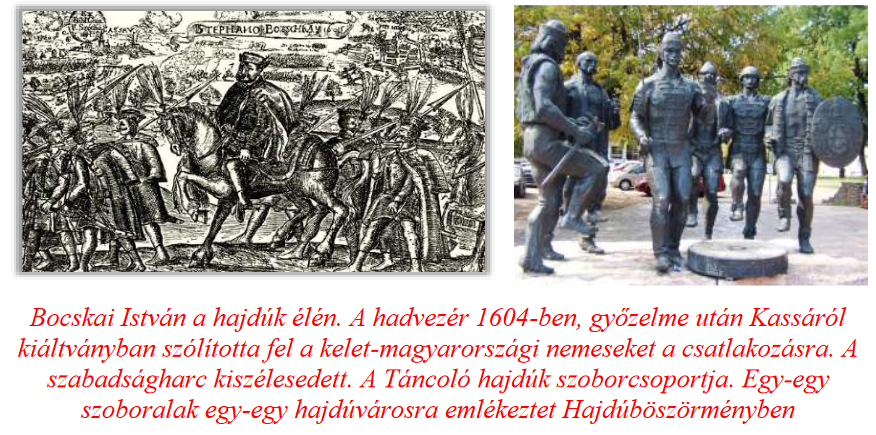 When Bocskai traveled to Prague in 1602, where the Emperor was staying, to complain about Basta's atrocities, the Court put him on trial and detained him for two years. When Bocskai returned to Hungarian soil, he won the cause of the Hungarians not by words and promises, but by force of arms. This is how the freedom struggle led by Bocskai broke out on October 15, 1604, in the border of Álmosd, which ended with a Hungarian victory. For his further battles, he obtained the support of the wandering Hajduks, and in return for his promise to settle them, he accumulated victory after victory. He kept his promise, and the people of Hajdúváros still pay great respect to the historical personality and legacy of István Bocskai. Thanks to the victories, Bocskai was elected prince of Hungary and Transylvania in the spring of 1605 in Nyárádszereda and then in Szerencs.
When Bocskai traveled to Prague in 1602, where the Emperor was staying, to complain about Basta's atrocities, the Court put him on trial and detained him for two years. When Bocskai returned to Hungarian soil, he won the cause of the Hungarians not by words and promises, but by force of arms. This is how the freedom struggle led by Bocskai broke out on October 15, 1604, in the border of Álmosd, which ended with a Hungarian victory. For his further battles, he obtained the support of the wandering Hajduks, and in return for his promise to settle them, he accumulated victory after victory. He kept his promise, and the people of Hajdúváros still pay great respect to the historical personality and legacy of István Bocskai. Thanks to the victories, Bocskai was elected prince of Hungary and Transylvania in the spring of 1605 in Nyárádszereda and then in Szerencs. Bocskai's political successes were indicated by the peace of Vienna, signed on June 23, 1606, and then the peace of Zsitvatorok, signed on November 11, 1606 at the mouth of the Zsitva river. The latter put an end to the fifteen-year war that caused so much destruction. The settlement of the Hajduk can be counted among the results of the peace treaty in Vienna that are still effective to this day. About ten thousand Hajdú not only received nobility, but also land and houses, which the residents of the Hajdú towns still remember with pride. However, Bocskai did not only ensure the privileges of the Hajduks, but also the Székelys. During the independence wars, Imre Thököly, Késmárk's lord, was the first significant general of the Kuruc armies.
Bocskai's political successes were indicated by the peace of Vienna, signed on June 23, 1606, and then the peace of Zsitvatorok, signed on November 11, 1606 at the mouth of the Zsitva river. The latter put an end to the fifteen-year war that caused so much destruction. The settlement of the Hajduk can be counted among the results of the peace treaty in Vienna that are still effective to this day. About ten thousand Hajdú not only received nobility, but also land and houses, which the residents of the Hajdú towns still remember with pride. However, Bocskai did not only ensure the privileges of the Hajduks, but also the Székelys. During the independence wars, Imre Thököly, Késmárk's lord, was the first significant general of the Kuruc armies.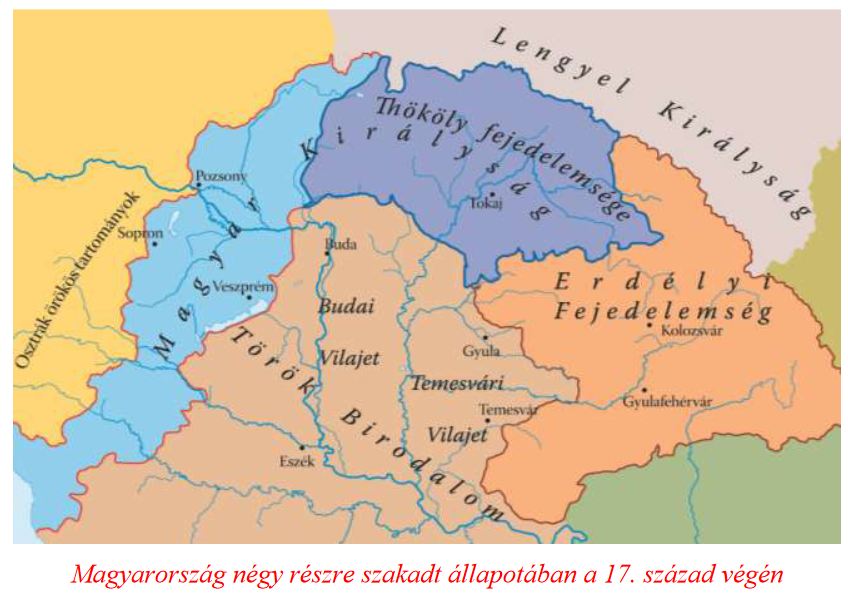 Thököly became the stepfather of little Ferenc Rákóczi when he married Ilona Zrínyi, who became a widow at an early age. He fought a war of independence against the Habsburgs, and when he became the prince of Upper Hungary between 1682-1685, Hungary, which was divided into three parts, split into four parts. Thököly was also elected prince of Transylvania in September 1690, although he could only exercise his power in Transylvania for a short month.
Thököly became the stepfather of little Ferenc Rákóczi when he married Ilona Zrínyi, who became a widow at an early age. He fought a war of independence against the Habsburgs, and when he became the prince of Upper Hungary between 1682-1685, Hungary, which was divided into three parts, split into four parts. Thököly was also elected prince of Transylvania in September 1690, although he could only exercise his power in Transylvania for a short month.
The Great Prince, II. Ferenc Rákóczi's freedom struggle against Vienna
The last Transylvanian prince II.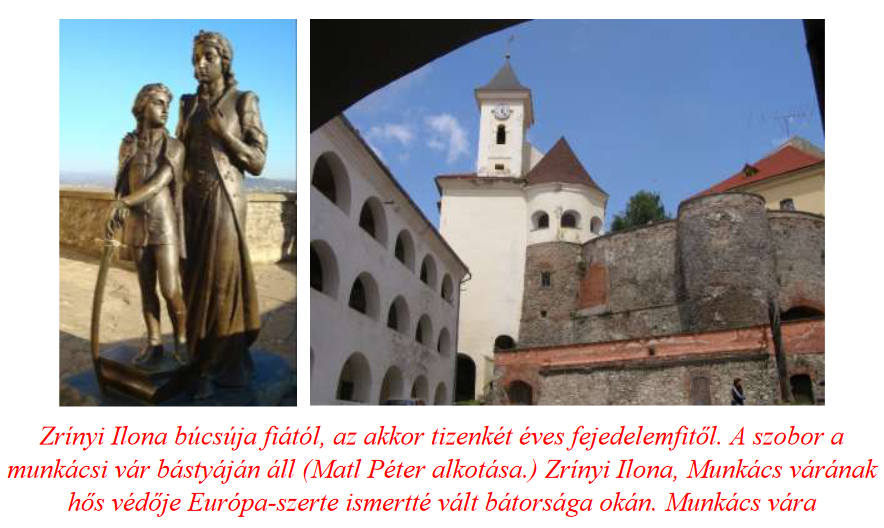 Ferenc Rákóczi, the leading prince of the Kuruc freedom struggle, son of Ferenc I. Rákóczi and Ilona Zrínyi. Little Rákóczi got to know camp life at the age of seven, when his stepfather, Imre Thököly, took him with him to the campaigns against the Habsburgs. At the beginning of the War of Independence, before 1703, the Christian armies drove the Turks out of the country for good in 1699. However, Hungary and Transylvania were not liberated, because the oppressive machinery of the Habsburg Empire replaced the Turks. Ferenc Rákóczi tried to prevent this aspiration of Vienna when he became the leader of the freedom struggle. Ilona Zrínyi was forced to surrender the castle on January 17, 1688, after nearly three years of defense.
Ferenc Rákóczi, the leading prince of the Kuruc freedom struggle, son of Ferenc I. Rákóczi and Ilona Zrínyi. Little Rákóczi got to know camp life at the age of seven, when his stepfather, Imre Thököly, took him with him to the campaigns against the Habsburgs. At the beginning of the War of Independence, before 1703, the Christian armies drove the Turks out of the country for good in 1699. However, Hungary and Transylvania were not liberated, because the oppressive machinery of the Habsburg Empire replaced the Turks. Ferenc Rákóczi tried to prevent this aspiration of Vienna when he became the leader of the freedom struggle. Ilona Zrínyi was forced to surrender the castle on January 17, 1688, after nearly three years of defense.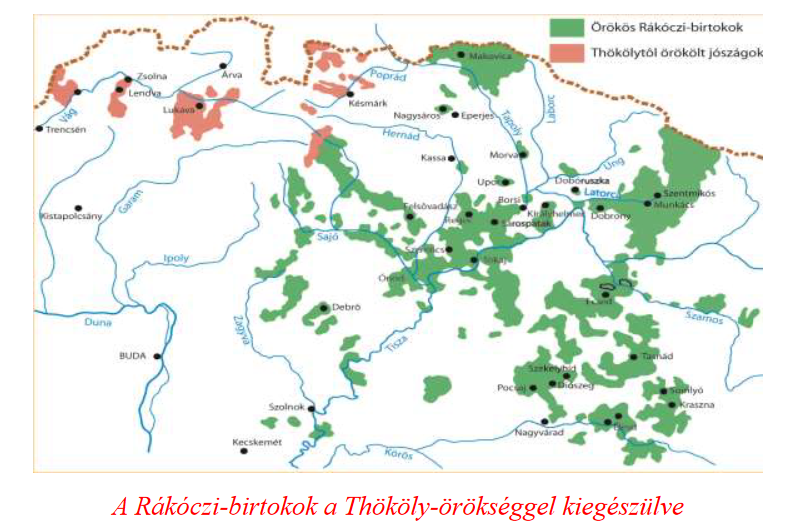 However, he managed to ensure that Munkács' defenders received amnesty, and the Rákóczi property could remain in the name of his children. This was vitally important. After all, if it doesn't happen like this, II. Ferenc Rákóczi's life and political career would have taken a completely different direction. At the beginning of the War of Independence II.
However, he managed to ensure that Munkács' defenders received amnesty, and the Rákóczi property could remain in the name of his children. This was vitally important. After all, if it doesn't happen like this, II. Ferenc Rákóczi's life and political career would have taken a completely different direction. At the beginning of the War of Independence II.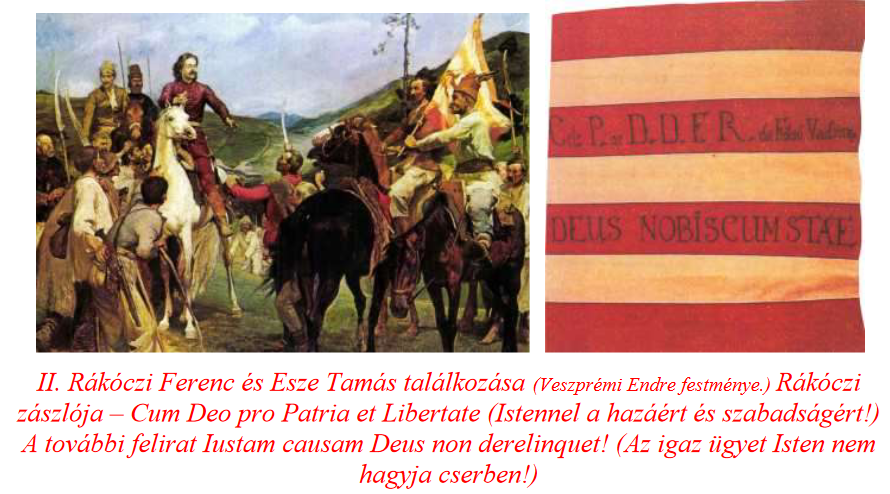 Ferenc Rákóczi is only 27 years old, but he has already visited Bécsújhely prison. His grandfather, Péter Zrínyi, was executed by the Habsburgs, his mother, Ilona Zrínyi, and foster father, Imré Thököly, were exiled, and his sister, Julianna, was separated from him. They wanted to re-educate him as a German in Czech and Austrian Jesuit schools. However, the blood of the Zrínyis, Báthoryas, Lorántffys, and Rákóczias ran in the veins of the young man who was left alone and seemed defenseless. The young man saw the horrible, plundered state of his country and its estates, and realized that even though the Turks were gone, the looting of their lands and the relegation of the Hungarian nobility and peasantry to serfdom had not changed anything. The Brezán proclamation issued on May 6, 1703 is a document of historical significance, with which Rákóczi called a part of the serfs to join the Kuruc army in addition to the forces of the order and nobility. The renowned and talented Habsburg general of the time, Montecuccoli, set off from Munkács castle after Rákóczi to liquidate the Kuruc army, which was still being organized.
Ferenc Rákóczi is only 27 years old, but he has already visited Bécsújhely prison. His grandfather, Péter Zrínyi, was executed by the Habsburgs, his mother, Ilona Zrínyi, and foster father, Imré Thököly, were exiled, and his sister, Julianna, was separated from him. They wanted to re-educate him as a German in Czech and Austrian Jesuit schools. However, the blood of the Zrínyis, Báthoryas, Lorántffys, and Rákóczias ran in the veins of the young man who was left alone and seemed defenseless. The young man saw the horrible, plundered state of his country and its estates, and realized that even though the Turks were gone, the looting of their lands and the relegation of the Hungarian nobility and peasantry to serfdom had not changed anything. The Brezán proclamation issued on May 6, 1703 is a document of historical significance, with which Rákóczi called a part of the serfs to join the Kuruc army in addition to the forces of the order and nobility. The renowned and talented Habsburg general of the time, Montecuccoli, set off from Munkács castle after Rákóczi to liquidate the Kuruc army, which was still being organized.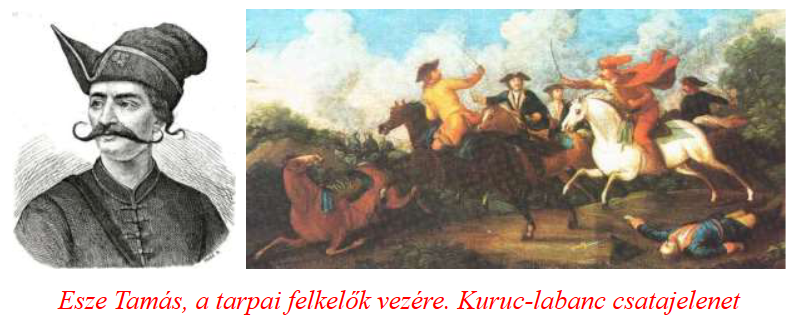 At that time, the vast majority of the nobility did not yet believe in victory, they did not dare to side with the kurucs. However, when two hundred serfs led by Tamás Esze appeared before Rákóczi in the Polish village of Klimiec, the woefully equipped and untrained serfs, the uprising could no longer be suppressed. On June 16, 1703, Rákóczi crossed the Hungarian border with an army of three thousand men at the Vereckei pass. The struggle for freedom, which often promised hope and was ultimately free of external and internal betrayals, began, which ended in failure. The outposts of the Kuruc troops already crossed the Transdanubia in the fall of 1703.
At that time, the vast majority of the nobility did not yet believe in victory, they did not dare to side with the kurucs. However, when two hundred serfs led by Tamás Esze appeared before Rákóczi in the Polish village of Klimiec, the woefully equipped and untrained serfs, the uprising could no longer be suppressed. On June 16, 1703, Rákóczi crossed the Hungarian border with an army of three thousand men at the Vereckei pass. The struggle for freedom, which often promised hope and was ultimately free of external and internal betrayals, began, which ended in failure. The outposts of the Kuruc troops already crossed the Transdanubia in the fall of 1703.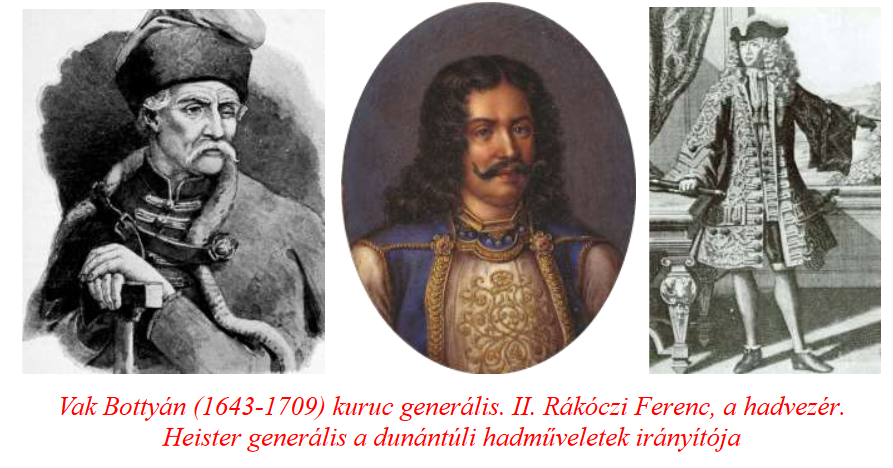 The operations here were directed by the former imperial officer, János Bottyán, who later became one of the heroes and a popular leader of the Kuruc War of Independence, and who is also mentioned in the historiography as Vak Bottyán. The first years of the freedom struggle filled the prince and his followers with hope, despite the fluctuating military achievements.
The operations here were directed by the former imperial officer, János Bottyán, who later became one of the heroes and a popular leader of the Kuruc War of Independence, and who is also mentioned in the historiography as Vak Bottyán. The first years of the freedom struggle filled the prince and his followers with hope, despite the fluctuating military achievements.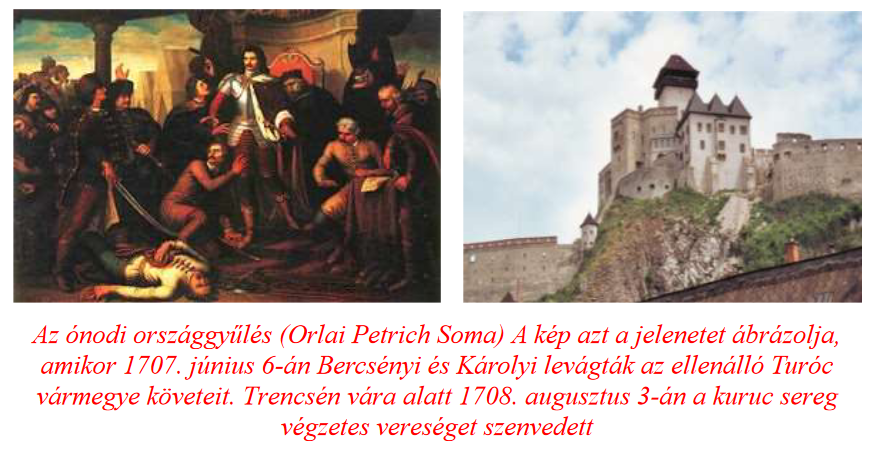
 When the Hungarian-hating emperor Lipót I (1657-1705) died in May 1705, the insurgents had to negotiate with a less anti-Hungarian king in the person of József I (1705-1711), who ascended the throne in his place. It was a problem that the Croatians rejected Rákóczi's invitation and instead believed in the false promises of Emperor József I. (Rákóczi might have remembered that just a hundred years ago, Bocskai was able to dictate the terms of peace to Vienna. Now the situation was not so favorable.) In the spring of 1706, Sarolt Amália was able to meet her husband in Nyitrán. Vienna released the princess on the condition that she persuade her husband to make peace. Nothing came of it, Rákóczi did not give up the fight. The conclusion of peace on the part of Vienna resulted in Hungary's development being broken again.
When the Hungarian-hating emperor Lipót I (1657-1705) died in May 1705, the insurgents had to negotiate with a less anti-Hungarian king in the person of József I (1705-1711), who ascended the throne in his place. It was a problem that the Croatians rejected Rákóczi's invitation and instead believed in the false promises of Emperor József I. (Rákóczi might have remembered that just a hundred years ago, Bocskai was able to dictate the terms of peace to Vienna. Now the situation was not so favorable.) In the spring of 1706, Sarolt Amália was able to meet her husband in Nyitrán. Vienna released the princess on the condition that she persuade her husband to make peace. Nothing came of it, Rákóczi did not give up the fight. The conclusion of peace on the part of Vienna resulted in Hungary's development being broken again.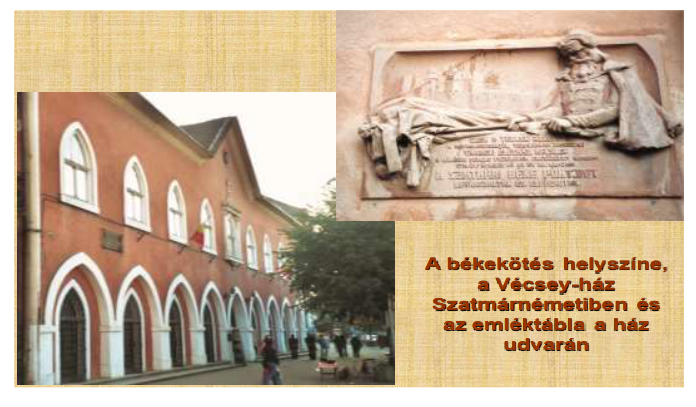 After all, the privileges of the order, which Rákóczi wanted to abolish in order to build a modern society, were restored. Whether Sándor Károlyi's decision was a betrayal, or was it the only good choice, is still a cause for debate today. It's a matter of perspective. On the other hand, the fact that the Rákóczi estates were divided among the nobles loyal to the court tells a lot.
After all, the privileges of the order, which Rákóczi wanted to abolish in order to build a modern society, were restored. Whether Sándor Károlyi's decision was a betrayal, or was it the only good choice, is still a cause for debate today. It's a matter of perspective. On the other hand, the fact that the Rákóczi estates were divided among the nobles loyal to the court tells a lot.
The rule of the Habsburgs (1711-1848)
III, who ascended the throne in 1711. King Charles of Hungary had no son. However, the House of Habsburg could not lose its ruling power over Austria and its neighboring countries since the 13th century, so they looked for a solution. This is how court lawyers came up with the use of "legal order, sanctification", "practical arrangement", Pragmatica Sanctio in Latin. An example of this was found after researching historical events many centuries ago. The basis is the (Habsburg) family agreement adopted in 1703, which concerned the order of inheritance. In 1713, all that happened was that this order of inheritance was extended to the female branch as well. In 1740, the young empress inherited a serious situation from her father, as she came face-to-face with II.
King Charles of Hungary had no son. However, the House of Habsburg could not lose its ruling power over Austria and its neighboring countries since the 13th century, so they looked for a solution. This is how court lawyers came up with the use of "legal order, sanctification", "practical arrangement", Pragmatica Sanctio in Latin. An example of this was found after researching historical events many centuries ago. The basis is the (Habsburg) family agreement adopted in 1703, which concerned the order of inheritance. In 1713, all that happened was that this order of inheritance was extended to the female branch as well. In 1740, the young empress inherited a serious situation from her father, as she came face-to-face with II.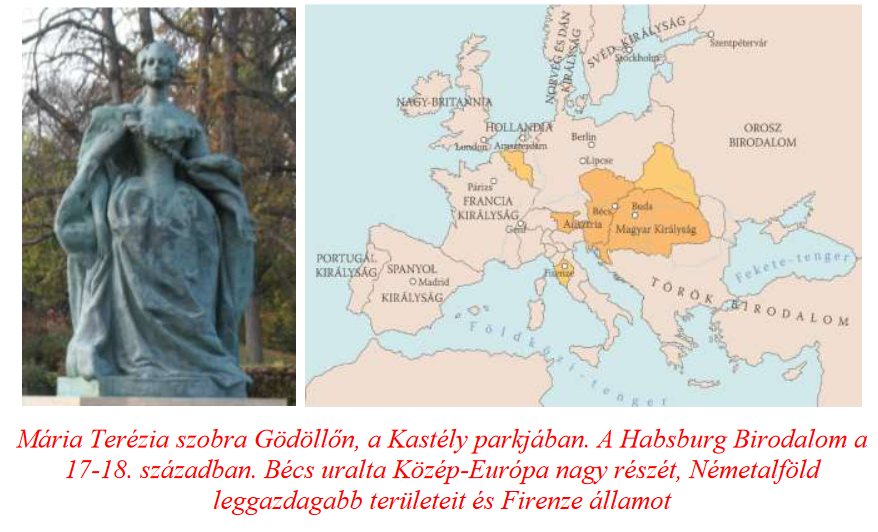 With King Frederick (1740-1786) of Prussia, who attacked the Habsburg Empire without a declaration of war. In addition to Silesia, Vienna also lost a significant part of the Balkans. Mária Terézia knew that she could only keep her power and throne with the help of the Hungarians. This is how the memorable Bratislava Parliament of 1741 took place, where our nobles offered their "lives and blood" to save Vienna. Not the first time and not the last time. Mária Theresia was continued by her father, III.
With King Frederick (1740-1786) of Prussia, who attacked the Habsburg Empire without a declaration of war. In addition to Silesia, Vienna also lost a significant part of the Balkans. Mária Terézia knew that she could only keep her power and throne with the help of the Hungarians. This is how the memorable Bratislava Parliament of 1741 took place, where our nobles offered their "lives and blood" to save Vienna. Not the first time and not the last time. Mária Theresia was continued by her father, III. The only obstacle to Károly's unifying policy was the resistance of the Hungarians. There was no problem with the always flexible Czechs, who were "more Austrian than the Austrians", they served Vienna faithfully both before and after. (Or just the European power that showed strength. They are not much different from the Romanians today.) Mária Terézia knew how to keep the Hungarian nobility's historical faith and respect for their ancestors awake with one gesture at a time. Such was the establishment of the Order of Saint Stephen and the bringing home of Saint Jobb from Ragusa (Dubrovnik). The latter was preceded by years of negotiations, as a result of which the Republic of Ragusa was willing to extradite Szent Jobb to Hungary. True, in the meantime, in January 1764, the massacre at Madefalv, which decimated the Székelys, took place, as well as the appointment of Adam Kollár, a Hungarian-hating, literate native of Tót, as Vienna's chief archivist. In 1765, Transylvania was transformed into a Grand Duchy, which placed Transylvania, an integral part of Hungary for several centuries, under the authority of Vienna. Kollár describes the Hungarians as barbaric herds, whom European cultured peoples will sooner or later cast out from among themselves. At that time, they will be made aware throughout Europe that the Hungarians are a foreign people that will never be able to fit in among the Latin, Germanic, and Slavic peoples. The court officials and the secret police gave Kollár and his followers a free pass, while the counterarguments and written responses of the Hungarians were banned. Printing presses were under strict state control. However, Kollár's discussion paper submitted to the Parliament stirred up the feelings of the Hungarian nobility so much that in 1764-1765. As a result of their fierce protest at the Bratislava Parliament in 2008, the author was dismissed from his position. It was characteristic of Mária Terézia's "politics" that she secretly continued to use the services of the Hungarian-hater Kollár. The proof of this is that József, the heir to the throne and the later hat-wearing king, was also influenced by Kollár's teachings and spirituality. The German scientist Johann Gottfried Herder (1744-1803), who became known among Hungarians with his famous prediction, also grew up under the teachings of the Slavist archivist. According to this, the Hungarian language and the Hungarian people will disappear from the map of Europe in two centuries. However, the Carpathian Basin must have been under a lucky constellation at that time, because such greats as Kazinczy and Kölcsey, Mihály Csokonai and Fazekas, Imre Madách, and the Széchenyis, Batthyány and Kossuth, Vörösmarty and Jókai, József Wesselényi and Eötvös, János Arany and Ferenc Liszt, Deák and Petőfi, Mihály Tompa and József Katona, the Bolyaiak and Semmelweis, Mihály Erkel and Pollack, Teréz Brunszvik and Blanka Teleki, Miklós Barabás and Mihály Munkácsy, Ányos Jedlik and János Kriza, just to name a few that suddenly came to mind . Hungary did not disappear along with its language, but its language, culture, and national consciousness began to flourish in an unprecedented way in the 19th century.
The only obstacle to Károly's unifying policy was the resistance of the Hungarians. There was no problem with the always flexible Czechs, who were "more Austrian than the Austrians", they served Vienna faithfully both before and after. (Or just the European power that showed strength. They are not much different from the Romanians today.) Mária Terézia knew how to keep the Hungarian nobility's historical faith and respect for their ancestors awake with one gesture at a time. Such was the establishment of the Order of Saint Stephen and the bringing home of Saint Jobb from Ragusa (Dubrovnik). The latter was preceded by years of negotiations, as a result of which the Republic of Ragusa was willing to extradite Szent Jobb to Hungary. True, in the meantime, in January 1764, the massacre at Madefalv, which decimated the Székelys, took place, as well as the appointment of Adam Kollár, a Hungarian-hating, literate native of Tót, as Vienna's chief archivist. In 1765, Transylvania was transformed into a Grand Duchy, which placed Transylvania, an integral part of Hungary for several centuries, under the authority of Vienna. Kollár describes the Hungarians as barbaric herds, whom European cultured peoples will sooner or later cast out from among themselves. At that time, they will be made aware throughout Europe that the Hungarians are a foreign people that will never be able to fit in among the Latin, Germanic, and Slavic peoples. The court officials and the secret police gave Kollár and his followers a free pass, while the counterarguments and written responses of the Hungarians were banned. Printing presses were under strict state control. However, Kollár's discussion paper submitted to the Parliament stirred up the feelings of the Hungarian nobility so much that in 1764-1765. As a result of their fierce protest at the Bratislava Parliament in 2008, the author was dismissed from his position. It was characteristic of Mária Terézia's "politics" that she secretly continued to use the services of the Hungarian-hater Kollár. The proof of this is that József, the heir to the throne and the later hat-wearing king, was also influenced by Kollár's teachings and spirituality. The German scientist Johann Gottfried Herder (1744-1803), who became known among Hungarians with his famous prediction, also grew up under the teachings of the Slavist archivist. According to this, the Hungarian language and the Hungarian people will disappear from the map of Europe in two centuries. However, the Carpathian Basin must have been under a lucky constellation at that time, because such greats as Kazinczy and Kölcsey, Mihály Csokonai and Fazekas, Imre Madách, and the Széchenyis, Batthyány and Kossuth, Vörösmarty and Jókai, József Wesselényi and Eötvös, János Arany and Ferenc Liszt, Deák and Petőfi, Mihály Tompa and József Katona, the Bolyaiak and Semmelweis, Mihály Erkel and Pollack, Teréz Brunszvik and Blanka Teleki, Miklós Barabás and Mihály Munkácsy, Ányos Jedlik and János Kriza, just to name a few that suddenly came to mind . Hungary did not disappear along with its language, but its language, culture, and national consciousness began to flourish in an unprecedented way in the 19th century.
II. József (1780-1790) and the Reformation
The king in the hat was not only characterized by his behavior against the church. When he banned the monastic orders, among them the Hungarian-founded Paulists, when he went against the pope and the faithful, his only goal was to create a state church. The national history of the peoples of his empire, especially the Hungarians, left him cold, but he did not respect the ancient traditions either. He based all his actions on the false belief that nobles and peasants, citizens and intellectuals agreed with his ideas, since they were reasonable and served the interests of the empire. The Habsburg emperor with one of the greatest rulers of the era, II.
When he banned the monastic orders, among them the Hungarian-founded Paulists, when he went against the pope and the faithful, his only goal was to create a state church. The national history of the peoples of his empire, especially the Hungarians, left him cold, but he did not respect the ancient traditions either. He based all his actions on the false belief that nobles and peasants, citizens and intellectuals agreed with his ideas, since they were reasonable and served the interests of the empire. The Habsburg emperor with one of the greatest rulers of the era, II.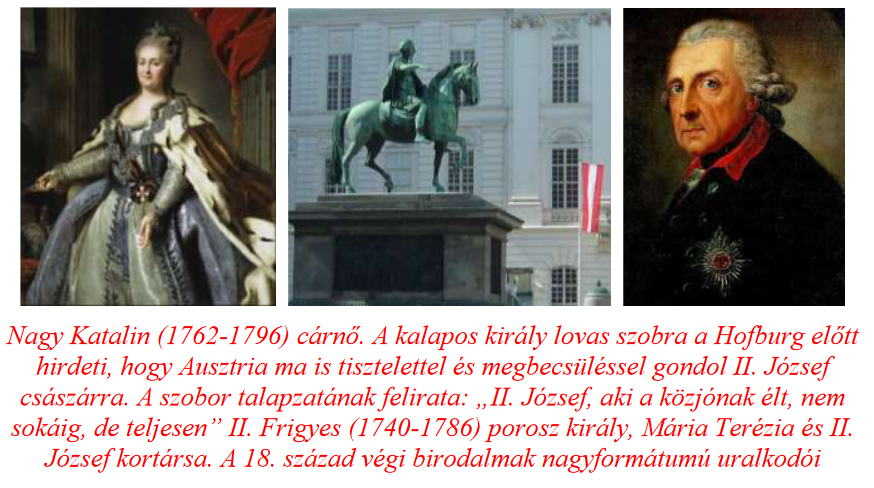 Catherine entered into an alliance with the Russian Tsarina. One of the reasons for this was the idea of opening to the east, and the other reason could have been that the enlightened but conservative Catholic II rejected the antecedents of the French Revolution. Joseph. In addition, Austria drifted into the Russian-Turkish war that broke out in 1787, the burden of which was also borne by the Hungarian nobility. The battles against the Ottoman Empire caused heavy blood loss and economic damage, which increased the antipathy of the Hungarian aristocracy towards Vienna. The domestic political situation became so bitter that the Hungarians already negotiated with Prussia, because they wanted to exchange Vienna's oppressive policy for Berlin's alliance. The situation of József, who was at the front, was aggravated by the fact that he fell ill and had to travel home to Vienna. The lung trouble that attacked his body did not go away, he died after a year of suffering.
Catherine entered into an alliance with the Russian Tsarina. One of the reasons for this was the idea of opening to the east, and the other reason could have been that the enlightened but conservative Catholic II rejected the antecedents of the French Revolution. Joseph. In addition, Austria drifted into the Russian-Turkish war that broke out in 1787, the burden of which was also borne by the Hungarian nobility. The battles against the Ottoman Empire caused heavy blood loss and economic damage, which increased the antipathy of the Hungarian aristocracy towards Vienna. The domestic political situation became so bitter that the Hungarians already negotiated with Prussia, because they wanted to exchange Vienna's oppressive policy for Berlin's alliance. The situation of József, who was at the front, was aggravated by the fact that he fell ill and had to travel home to Vienna. The lung trouble that attacked his body did not go away, he died after a year of suffering.
The Habsburg power again resorted to the weapon of violence
After Lipót's short reign (1790-1792), his eldest son, Ferenc, also from the House of Habsburg-Lorraine, came to the Hungarian throne. (It should be noted that under the name Francis II he was the last emperor of the German-Roman Empire, and from 1804, when the Austrian Empire was established, its first ruler.) The year 1792 is not only the year of Francis' accession to the throne, but also of the radicalization of the French Revolution also had a period. France's neighbors, Prussia and the Habsburg Empire - although in different ways - became familiar with the idea of the Enlightenment and partially accepted it. However, they were not willing to acknowledge the persecution of the church and the trampling of the imperial and royal power taken from God into the mud. This was already in 1791, even in II. Leopold and the Prussian II. Vilmos Frigyes' statement issued in Pillnitz made it clear. According to this, they would declare war on Paris if the French king (Louis XVI) were to suffer, or if ecclesiastical and secular dignitaries were persecuted. The French Republic, the new, "democratic" French state, attacked the Habsburg Empire in April 1792. The very democratic Paris dissolved the monastic orders, some of the priests were murdered, many thousands of church and secular figures were chased away and deported. The neck brace worked continuously, blood flowed in the streets and squares of Paris.
The French detour, which is essential for understanding the spirit of the age
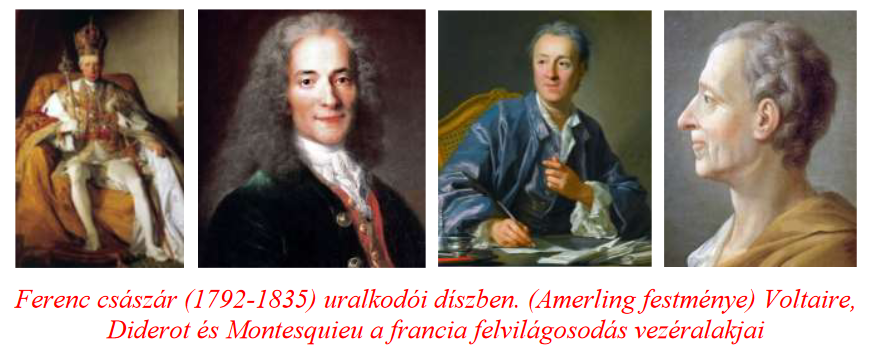 We can only highlight a few of the anti-Christian activities of the French "revolution". Among other things, on November 7, 1793, Christianity and with it the church were legally abolished. The power of Reason and Nature, the new religion, was introduced. A spectacular ceremony took place at Notre Dame Cathedral, where a topless actress celebrated as the Goddess of Reason was placed on the altar. Churches were transformed into stables, warehouses, pubs, and clubs. (Just as the communists did later.) This is how the name of the radical Christian persecutors nesting in the church of St. James in Paris became the Jacobin party, and the name of the church became the Jacobin club. God was banned, replaced by Marat, the radical herald of the revolution, who had to be revered as a god.
We can only highlight a few of the anti-Christian activities of the French "revolution". Among other things, on November 7, 1793, Christianity and with it the church were legally abolished. The power of Reason and Nature, the new religion, was introduced. A spectacular ceremony took place at Notre Dame Cathedral, where a topless actress celebrated as the Goddess of Reason was placed on the altar. Churches were transformed into stables, warehouses, pubs, and clubs. (Just as the communists did later.) This is how the name of the radical Christian persecutors nesting in the church of St. James in Paris became the Jacobin party, and the name of the church became the Jacobin club. God was banned, replaced by Marat, the radical herald of the revolution, who had to be revered as a god. 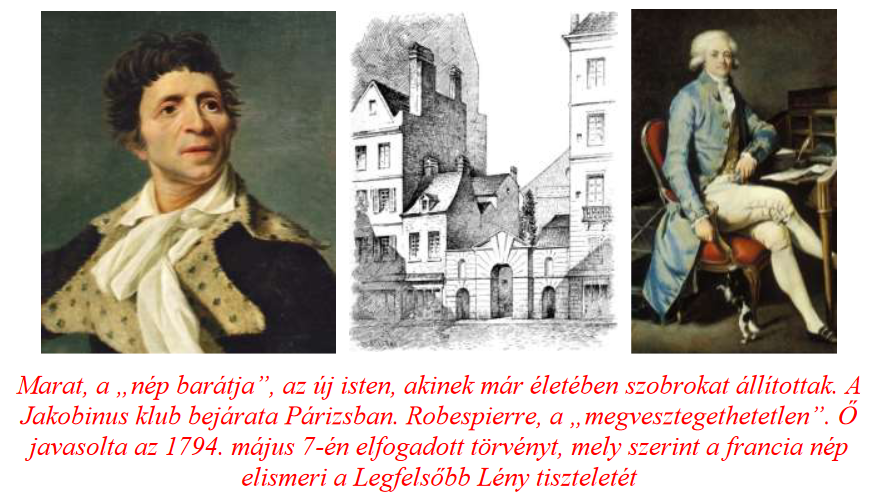
The policy of King Francis in Hungary
Although King Francis I opposed French ideals, he "poured out the meat with the soup" when he trampled on Hungarian national values and the basic aspirations of Hungarian development.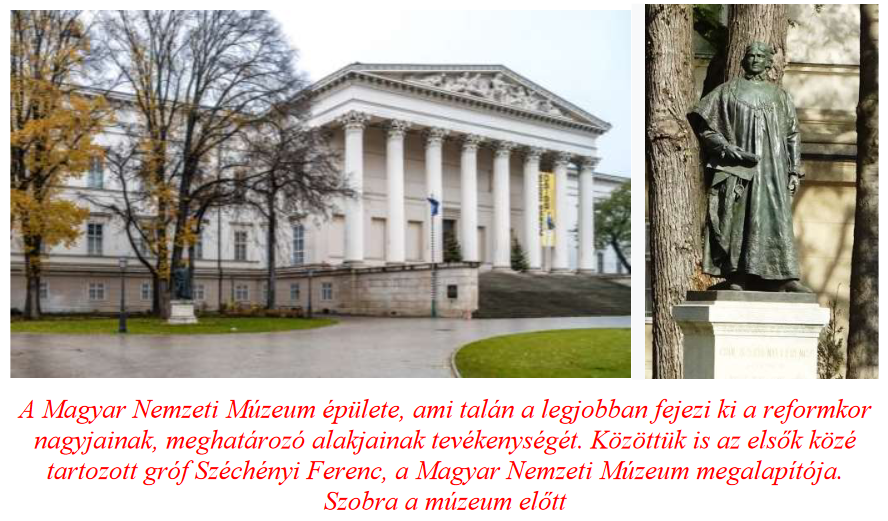 The suppression of the Martinovics' masonic conspiracy in 1795 was understandable, but Kazinczy's six-year imprisonment (1795-1801) was not. It is true that the famous actors of the reformation period studied the events of the French Revolution and were inspired by Freedom, equality, fraternity! from his good-sounding thoughts. However, they did not yet know what was behind this bloodbath, and they had no way of knowing what this would lead to in the future. (Many people don't even know it today, even though it's no longer a secret.) The era that covers the period of the controversial reign of Ferenc I began during the Hungarian Reformation. We can think about the extent to which the French terror and the rigid, dictatorial Habsburg rule contributed to these decades, which for us are a bright historical, literary, and fine art era. And what has not been mentioned yet, the "rejuvenation" of the peoples of the Carpathian Basin also began in these decades. An apt answer to this can be found in a proverb: The palm tree grows under weight!
The suppression of the Martinovics' masonic conspiracy in 1795 was understandable, but Kazinczy's six-year imprisonment (1795-1801) was not. It is true that the famous actors of the reformation period studied the events of the French Revolution and were inspired by Freedom, equality, fraternity! from his good-sounding thoughts. However, they did not yet know what was behind this bloodbath, and they had no way of knowing what this would lead to in the future. (Many people don't even know it today, even though it's no longer a secret.) The era that covers the period of the controversial reign of Ferenc I began during the Hungarian Reformation. We can think about the extent to which the French terror and the rigid, dictatorial Habsburg rule contributed to these decades, which for us are a bright historical, literary, and fine art era. And what has not been mentioned yet, the "rejuvenation" of the peoples of the Carpathian Basin also began in these decades. An apt answer to this can be found in a proverb: The palm tree grows under weight!
Author: Ferenc Bánhegyi
Cover image: The Kurucs take Kőszeg Castle
The parts of the series published so far can be read here: 1., 2., 3., 4., 5., 6., 7., 8., 9., 10., 11., 12., 13., 14., 15., 16., 17., 18., 19., 20., 21., 22., 23., 24,, 25., 26., 27., 28., 29/1.,29/2., 30., 31., 32., 33., 34., 35., 36., 37., 38., 39., 40., 41., 42., 43., 44., 45., 46., 47., 48., 49., 50., 51., 52., 53., 54., 55., 56., 57., 58., 59., 60., 61. 62., 63., 64.




